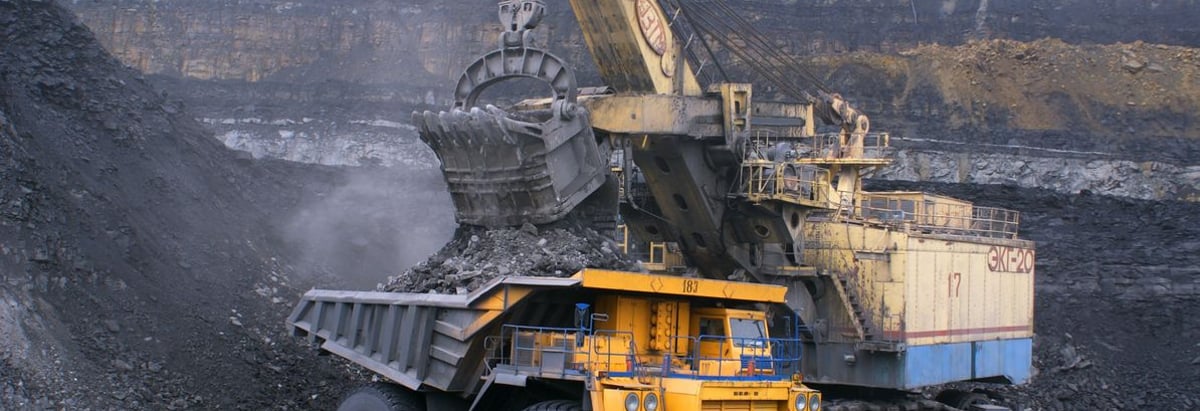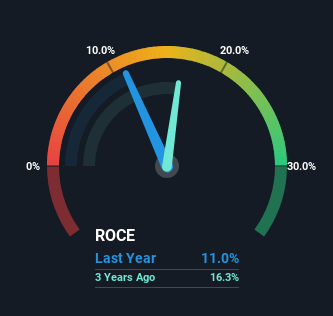- China
- /
- Oil and Gas
- /
- SHSE:601918
China Coal Xinji EnergyLtd (SHSE:601918) May Have Issues Allocating Its Capital

If you're looking for a multi-bagger, there's a few things to keep an eye out for. One common approach is to try and find a company with returns on capital employed (ROCE) that are increasing, in conjunction with a growing amount of capital employed. Put simply, these types of businesses are compounding machines, meaning they are continually reinvesting their earnings at ever-higher rates of return. Although, when we looked at China Coal Xinji EnergyLtd (SHSE:601918), it didn't seem to tick all of these boxes.
Return On Capital Employed (ROCE): What Is It?
If you haven't worked with ROCE before, it measures the 'return' (pre-tax profit) a company generates from capital employed in its business. Analysts use this formula to calculate it for China Coal Xinji EnergyLtd:
Return on Capital Employed = Earnings Before Interest and Tax (EBIT) ÷ (Total Assets - Current Liabilities)
0.11 = CN¥3.6b ÷ (CN¥43b - CN¥9.6b) (Based on the trailing twelve months to September 2024).
Thus, China Coal Xinji EnergyLtd has an ROCE of 11%. In absolute terms, that's a pretty normal return, and it's somewhat close to the Oil and Gas industry average of 10.0%.
Check out our latest analysis for China Coal Xinji EnergyLtd

In the above chart we have measured China Coal Xinji EnergyLtd's prior ROCE against its prior performance, but the future is arguably more important. If you're interested, you can view the analysts predictions in our free analyst report for China Coal Xinji EnergyLtd .
What The Trend Of ROCE Can Tell Us
On the surface, the trend of ROCE at China Coal Xinji EnergyLtd doesn't inspire confidence. To be more specific, ROCE has fallen from 15% over the last five years. On the other hand, the company has been employing more capital without a corresponding improvement in sales in the last year, which could suggest these investments are longer term plays. It may take some time before the company starts to see any change in earnings from these investments.
In Conclusion...
In summary, China Coal Xinji EnergyLtd is reinvesting funds back into the business for growth but unfortunately it looks like sales haven't increased much just yet. Yet to long term shareholders the stock has gifted them an incredible 134% return in the last five years, so the market appears to be rosy about its future. But if the trajectory of these underlying trends continue, we think the likelihood of it being a multi-bagger from here isn't high.
One more thing: We've identified 3 warning signs with China Coal Xinji EnergyLtd (at least 2 which make us uncomfortable) , and understanding these would certainly be useful.
While China Coal Xinji EnergyLtd may not currently earn the highest returns, we've compiled a list of companies that currently earn more than 25% return on equity. Check out this free list here.
New: AI Stock Screener & Alerts
Our new AI Stock Screener scans the market every day to uncover opportunities.
• Dividend Powerhouses (3%+ Yield)
• Undervalued Small Caps with Insider Buying
• High growth Tech and AI Companies
Or build your own from over 50 metrics.
Have feedback on this article? Concerned about the content? Get in touch with us directly. Alternatively, email editorial-team (at) simplywallst.com.
This article by Simply Wall St is general in nature. We provide commentary based on historical data and analyst forecasts only using an unbiased methodology and our articles are not intended to be financial advice. It does not constitute a recommendation to buy or sell any stock, and does not take account of your objectives, or your financial situation. We aim to bring you long-term focused analysis driven by fundamental data. Note that our analysis may not factor in the latest price-sensitive company announcements or qualitative material. Simply Wall St has no position in any stocks mentioned.
About SHSE:601918
China Coal Xinji EnergyLtd
Engages in mining, washing, and sales of bituminous and anthracite coal in China and internationally.
Proven track record average dividend payer.
Market Insights
Community Narratives



